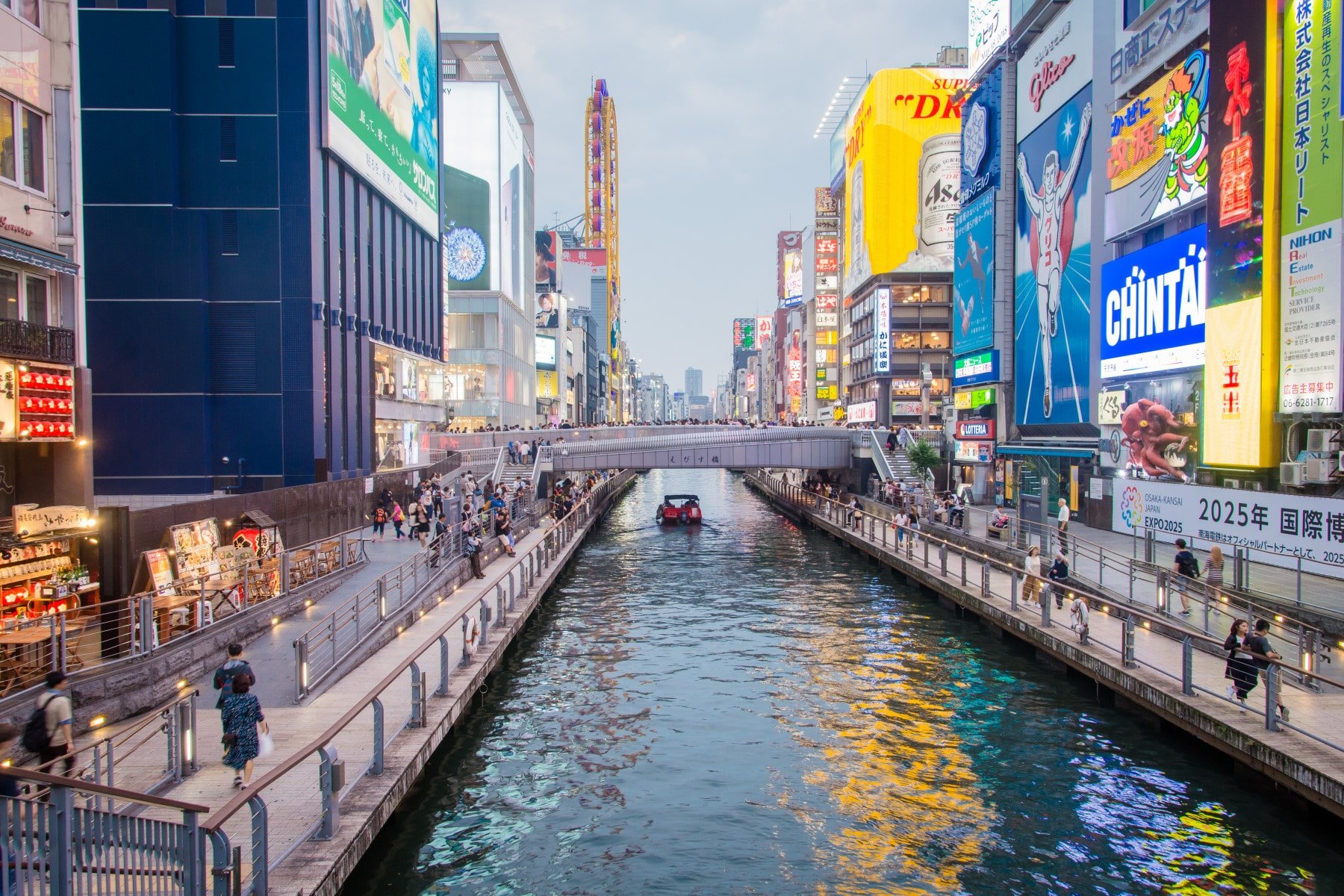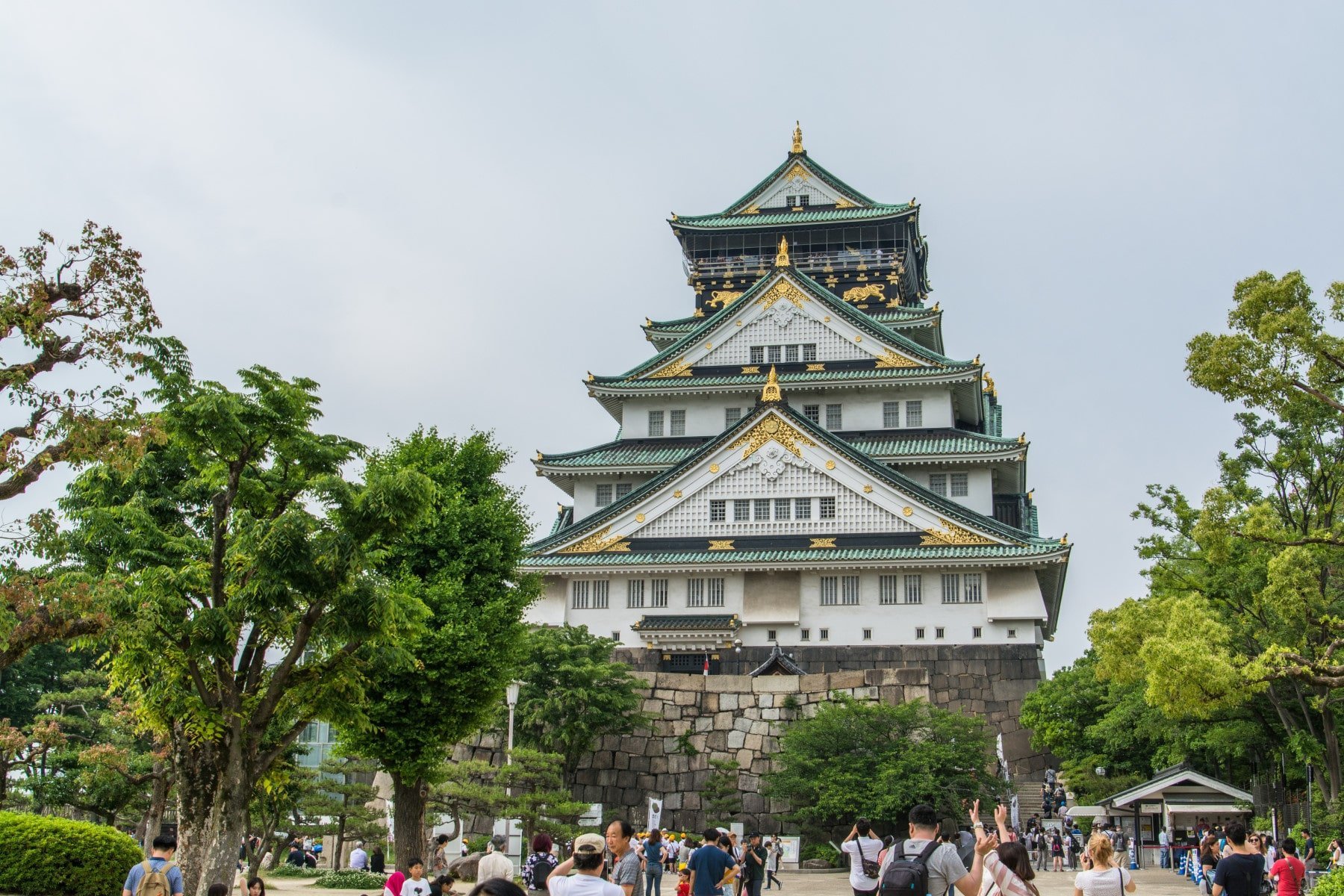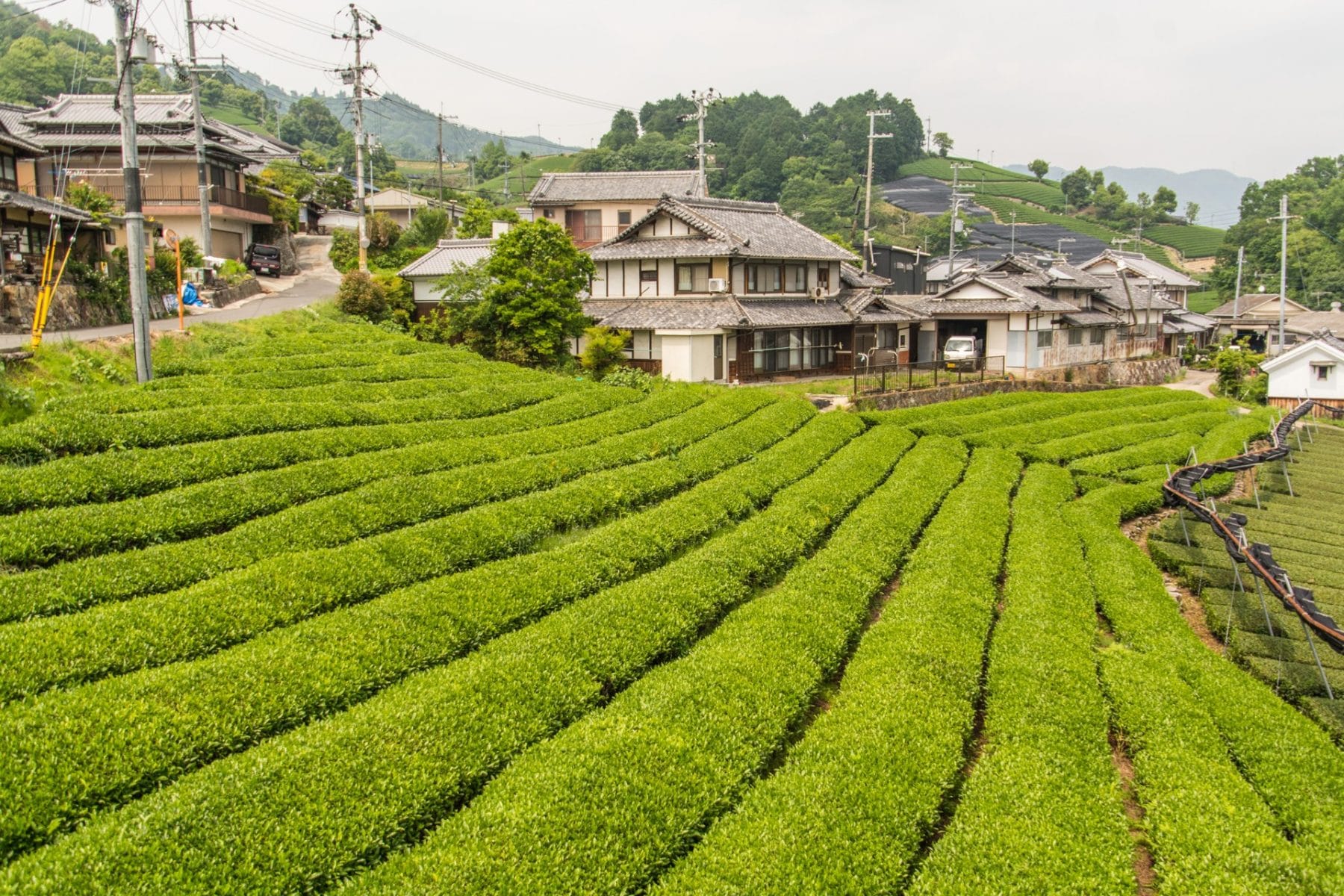Why visit Japan?
When you look at "generic" photos (try typing "Japan photos"), Japan only seems to exist in spring or autumn, between its sakura blossoms — a true custom called "hanami" (literally "flower viewing") — or the magnificent colors of the maples.
And while it is undeniable that these two seasons enhance the country and attract crowds, this somewhat obscures all the cultural and historical richness of an archipelago that has long remained isolated from the outside world.
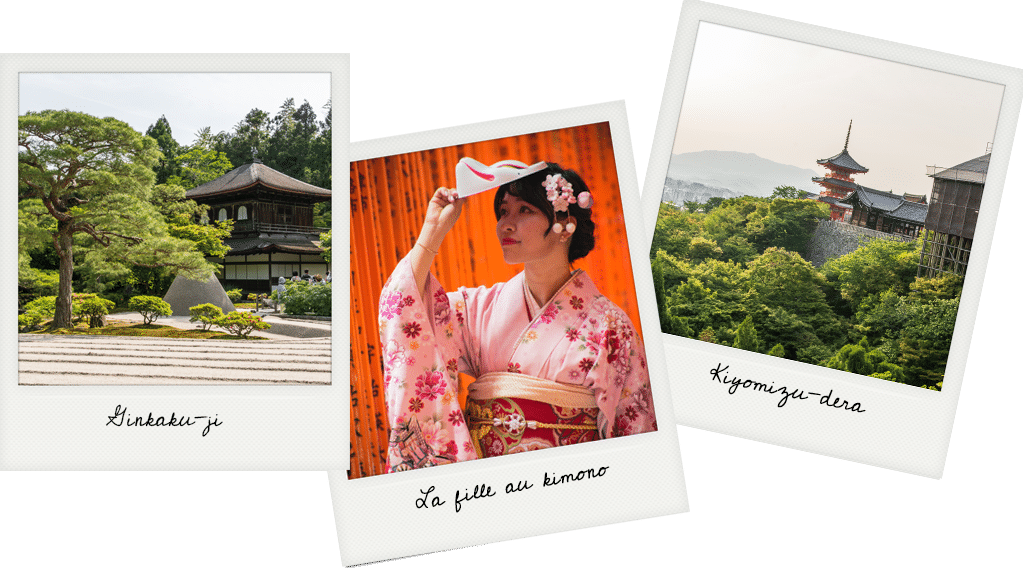
Between sea, mountains, and volcanoes, between gigantic megacities like Tokyo and, in contrast, its small traditional villages like Miyama, the country offers a diversity of landscapes and multiple discoveries in Asia. Given that Japan is an island archipelago made up of more than 3,000 islands, there is plenty to explore.
This is an opportunity to experience a unique stay in a ryokanEnjoying a relaxing hot bath (onsen), attending a matsuri festival, watching a sumo match, hiking in the Japanese Alps, or finding peace and quiet in the country's many temples and shrines—all these experiences give a good idea of the range of experiences Japan has to offer.
If there's one drawback, it's clear that traveling to Japan is more expensive than to many other Asian countries. This is the price of immersing yourself in a country with a unique character, a blend of strong traditions, confident modernity, and a touch of typically Japanese "eccentricity."

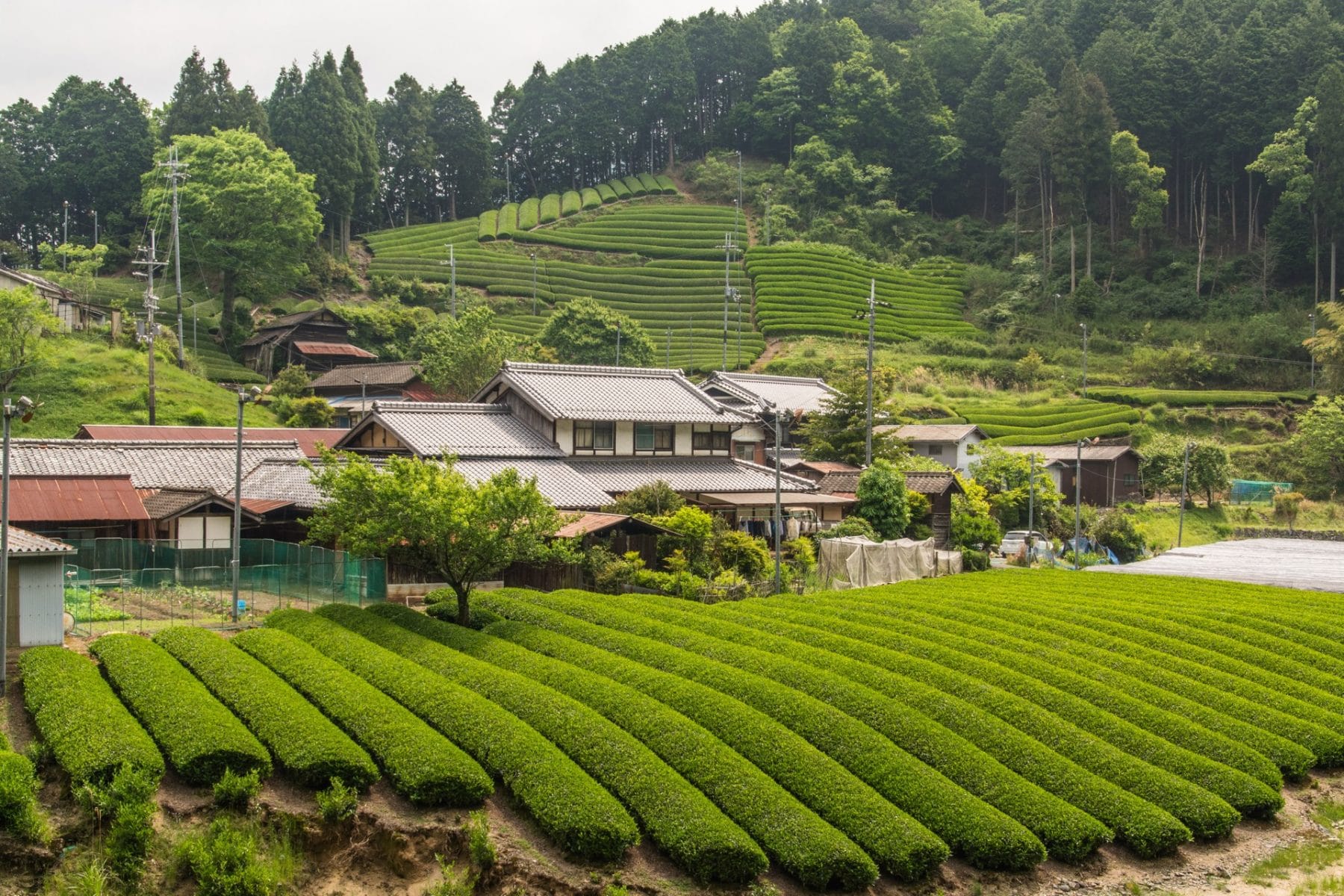
Between Japanese cuisine and the manga culture that has reached us, Japan remains popular in France. Even for me, it's a country that has always fascinated me, and my attraction to Asia, which ultimately led me to Thailand, owes much to this initial fascination with Japan.
The country's turbulent history has left many traces (not just that of a geisha, if you get the reference). And while some temples and buildings have had to be rebuilt, many remain centuries old. Japan is also famous for its castles, which still dominate the cities today, such as Himeji Castle, one of the most beautiful, or Osaka Castle, world-renowned. The austerity of the castles often contrasts with the beauty that emanates from them, particularly in Japanese gardens, veritable works of art, which perfectly illustrate this.
It's also a country often described as "zen," much like its inhabitants, who are often discreet and respectful of traditions. These sometimes complex codes make it, in our eyes, an almost mysterious and misunderstood country. While my experience is currently limited to the areas around Kyoto and Osaka, I have no doubt I'll return to the Land of the Rising Sun in the future, even if it costs more.
- Diversity of landscapes.
- Ease of inter-city travel.
- The food was varied and generally good.
- Exciting and rich culture and history
- The reserved nature of the Japanese.
- Cost of stay.
- Growing popularity: large crowds at well-known spots (depending on the season).
For a tourist stay up to 90 dayspassport holders French, Belgian, Swiss, canadien, Tunisia (and most European passports) do not need a visa.
The passport must be valid for the entire duration of the stay and you cannot exercise no paid activity during this period.
- Upon arrival, the immigration officer affixes a status Temporary Visitor (90 days).
- Un return ticket or continuation may be requested.
- Some nationals (Austria, Germany, Ireland, Liechtenstein, Mexico, Switzerland, United Kingdom) may ask on site a extension 90 days (total 180 days) with Japanese immigration.
Several nationalities (e.g. Algeria, Moroccoetc.) must obtain a visa from the relevant Japanese embassy or consulate.
And for a stay of more than 90 days?
Un visa is required (studies, work, cultural stay, etc.). In France, the application process is handled by:
- theEmbassy of Japan in Paris ;
- or Consulate (Marseille, Strasbourg);
- or Consular office in Lyon (area of competence).
How does the Working Holiday Visa (WHV) for Japan work?
Le PVT allows the French to stay up to one year in Japan, primarily for holiday, with the possibility of side work (activities related to "night" establishments are prohibited).
- Age : 18 to 30 years old (until the day before turning 31).
- Only once per person (non-renewable, non-extendable, non-transferable on site).
- Funds required (France) :
- 4 500 € minimum without return ticket;
- ou 3 100 € with Return ticket + statement proving purchase.
- Medical certificate Recent [recent] required.
- France Quota 2025 : 1,800 seats (distribution by consular posts).
- Once delivered, you have 12 months to enter Japan; the visa is then activated upon arrival for 12 months.
Practical tip: To save time upon arrival, you can prepare your immigration/customs documents online through the official service.
Visit Japan Web.
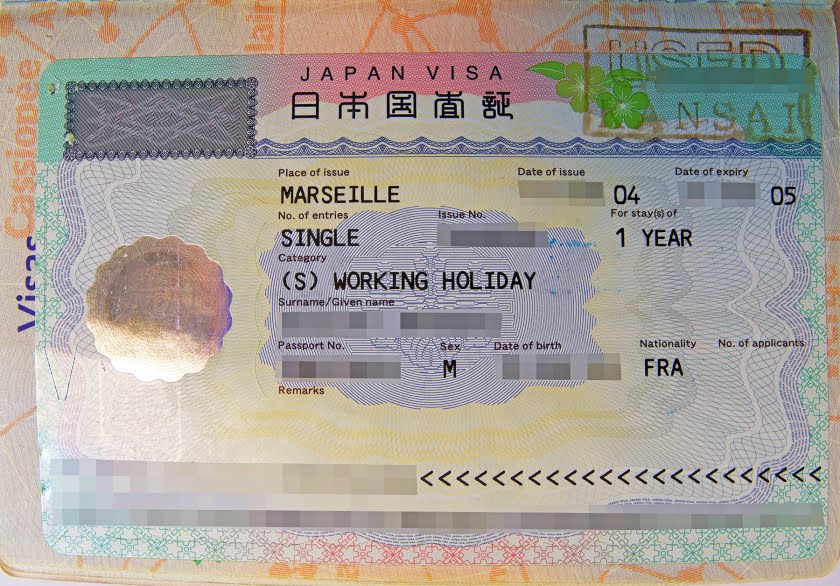
Climate in Japan
Japan is often compared to a climate "similar to Europe" with its four distinct seasons. In principle, this remains true for a large part of the country: spring in bloom, hot summer colorful autumn, cold winter.
But the reality is more nuanced: with Japan stretching over 3,000 km from north to south, conditions vary enormously from region to region.
Here's how we can divide the country into 6 major climatic zones of Japan:
1. Hokkaidō & northern Honshū (Sapporo, Aomori, Akita)
On the island of Hokkaidō, and in the north of the main island of Honshū, there is a temperate continental climate, close to that of Quebec in terms of latitude: mild summers, harsh and snowy winters, with snow sometimes present for several months in a row.
- A short and mild summer.
- Very cold winter, heavy snow for several months.
- Late spring.
- Ideal for: skiing, snowy landscapes, winter festivals.
Heading south towards central Honshū, the climate becomes humid subtropical, characterized by relatively mild winters, little snow, and hot, very humid summers, with a rainy season (tsuyu) in June–July. This large area is itself divided into west coast and east coast.

2. West coast of Honshū (Kanazawa, Niigata, Toyama)
Heavily exposed to Siberian winds in winter, this coast receives some of the heaviest snowfall in the country.
- Influence of Siberian winds.
- Heavy snowfall in winter.
- Hot and humid summers, autumns often splendid.
- Ideal: onsen + snow, traditional atmosphere.
3. East Coast & Central Honshū (Tokyo, Yokohama, Nagoya)
Being more sheltered, this area experiences dry and cool winters, rarely snowy, and hot and humid summers.
- Dry and cool winter, snow is rare.
- Hot and humid summer.
- Tsuyu: June–July.
- Ideal for: city visits, spring blossoms.
4. Kansai & Chūgoku (Kyoto, Osaka, Nara, Hiroshima)
This region shares the characteristics of central Honshū, with a well-defined rainy season and difficult summers for those sensitive to humidity.
- Mild winter.
- Very hot and humid summer.
- Rainy season is pronounced.
- Ideal for: temples, historical cities, momiji (autumn).
5. Kyūshū (Fukuoka, Kagoshima, Nagasaki)
Further south, from Kyushu onwards, the climate becomes more temperate: mild winters, pleasant autumns, but heavy and rainy summers, with a higher risk of typhoons, especially in September and early October.
- Very mild winter.
- Tropical summer.
- Typhoons possible in late summer–early autumn.
- Ideal: hot springs, volcanism, wilder islands.
6. Okinawa & Southern Archipelagos
At the southern tip, around Okinawa, the climate becomes almost tropical, comparable to Taiwan, with frost-free winters and a warm sea for much of the year.
- Subtropical/tropical climate.
- Mild to warm winter, without frost.
- Wet summer.
- Typhoon season: July–October.
- Ideal: beaches, snorkeling, island atmosphere.
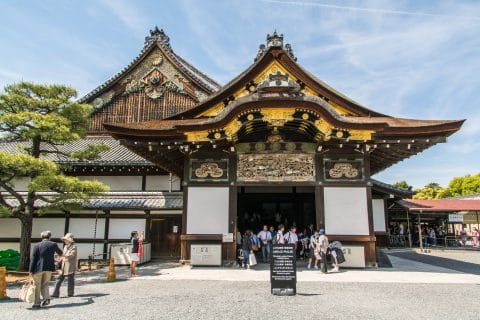

Best time to visit Japan
It clearly depends on what you're looking for. Japan is beautiful all year round, but some periods are more pleasant than others depending on the region.
Spring (March–May) — the cherry blossom season
- This is the most popular time of year: cherry blossoms, mild temperatures and a very pleasant atmosphere.
- Disadvantages: high crowds, especially in Kyoto, Tokyo, Osaka.
Summers (June–August) — hot, humid, rainy
- Rainy season in June–July.
- The heat can be stifling at times in July and August.
- Japanese holidays in August → crowds + higher prices.
- Possible typhoons at the end of August and in September.
Autumn (October–early December) — the momiji
- Japan's other highlight season: stable weather, comfortable temperatures and red and gold landscapes.
- The west coast is particularly spectacular.
Winter (December–March) — cold but very beautiful
- Tokyo: cold, dry, often sunny.
- North: superb snowy landscapes, excellent ski resorts.
- Ideal for onsen, snow, traditional villages.
- April–May : cherry blossoms, pleasant weather.
- October–late November : autumn colours, stable climate.
- December–March : for snow, skiing, onsen (Hokkaido / Japanese Alps).
- September : possible depending on the region, but beware of typhoons (see just after).
- June–July : rainy season (tsuyu).
- August : heat + humidity + Japanese holidays (crowds + price).
- September : risk of typhoons (Kyūshū / Okinawa in particular).
| Month | Minimum temperature | Maximum temperature | Rain | Sunshine (per month) |
|---|---|---|---|---|
| Jan. | 1 ° C | 10 ° C | 60mm | 193 p.m. |
| Feb. | 2 ° C | 11 ° C | 57mm | 170 p.m. |
| Mars | 5 ° C | 14 ° C | 116mm | 175 p.m. |
| Apr. | 10 ° C | 19 ° C | 134mm | 179 p.m. |
| Mai | 15 ° C | 24 ° C | 140mm | 180 p.m. |
| June | 19 ° C | 26 ° C | 168mm | 124 p.m. |
| Jul. | 22 ° C | 30 ° C | 156mm | 151 p.m. |
| August | 24 ° C | 31 ° C | 155mm | 174 p.m. |
| Sept. | 20 ° C | 28 ° C | 225mm | 127 p.m. |
| Oct. | 15 ° C | 22 ° C | 235mm | 129 p.m. |
| Nov. | 9 ° C | 17 ° C | 96mm | 150 p.m. |
| Dec. | 4 ° C | 12 ° C | 58mm | 174 p.m. |
WEATHER — Regional Variants
| Region / Month | Jan. | Feb. | Mars | Apr. | Mai | June | Jul. | August | Sept. | Oct. | Nov. | Dec. |
|---|---|---|---|---|---|---|---|---|---|---|---|---|
| Hokkaidō & North | OK, fresh | OK, fresh | mixed | Ideal | Ideal | mixed | Very hot | Very hot | mixed | Ideal | Ideal | OK, fresh |
| Western coast | OK, fresh | OK, fresh | mixed | Ideal | Ideal | mixed | Very hot | Very hot | mixed | Ideal | Ideal | OK, fresh |
| East Coast & Central | mixed | mixed | Ideal | Ideal | Ideal | Mixed (rain) | Very hot | Very hot | Mixed (possible typhoons) | Ideal | Ideal | mixed |
| Kansai & Chūgoku | mixed | mixed | Ideal | Ideal | Ideal | Mixed (rain) | Very hot | Very hot | Mixed (possible typhoons) | Ideal | Ideal | mixed |
| Kyushu | Mild mixed | Mild mixed | Ideal | Ideal | Mixed (warm) | Mixed (rain/hot) | Very hot | Very hot | Avoid (possible typhoons) | Ideal | Ideal | Mild mixed |
| Okinawa & archipelagos | Mild mixed | Mild mixed | Ideal | Ideal | Mixed (humid) | Mixed (rain) | To be avoided (typhoons) | To be avoided (typhoons) | Avoid (possible typhoons) | Ideal | Ideal | Mild mixed |
A vast and contrasting archipelago, Japan unfolds a mosaic of landscapes: volcanic islands, "alpine" mountains, wooded valleys, futuristic megacities, villages frozen in time, and listed shrines. at UNESCO.
Japan and its 47 prefectures are grouped into 8 regions. If we break it down, the official distribution is as follows, from north to south:
- Hokkaido (the island is the only one to be both a region and a prefecture in its own right)
- Tohoku (the area around Fukushima)
- Kanto (which notably includes Tokyo)
- Chubu (a mountainous region between Ishikawa and Shizuoka, where the more famous Nagano is located)
- Kansai (one of the most visited regions since it is home to Kyoto, Osaka, Nara among others)
- Chugoku (which includes the cities of Okayama and Hiroshima)
- Shikoku (the small island straddling Kansai and Chugoku)
- Kyushu and Okinawa (the group of more isolated islands south of Japan is included in the region including the island of Kuyshu)
 To keep things clear, I've grouped the visits into large areas from north to south, starting with its capital. Tokyo & the Kantō aside, then I will finish by Okinawa presented separately, because although the archipelago is administratively part of Kyushu, it is geographically isolated.
To keep things clear, I've grouped the visits into large areas from north to south, starting with its capital. Tokyo & the Kantō aside, then I will finish by Okinawa presented separately, because although the archipelago is administratively part of Kyushu, it is geographically isolated.
1) TOKYO & SURROUNDINGS (Kantō)
A sprawling capital city with stark contrasts, Tokyo It combines historic shrines, elegant parks, and ultramodern districts. You travel from Asakusa and its Senso-ji temple to Shinjuku Gyoen Gardens and Hama-Rikyū, from the Meiji-jingū shrine to the neon lights of Shibuya.
The viewpoints (Tokyo Tower, building observation decks) offer beautiful perspectives, while the museums and shopping streets maintain a very human scale. Nearby are Kamakura, Nikko, Hakone, and the Mount Fuji easily complement a first stay.
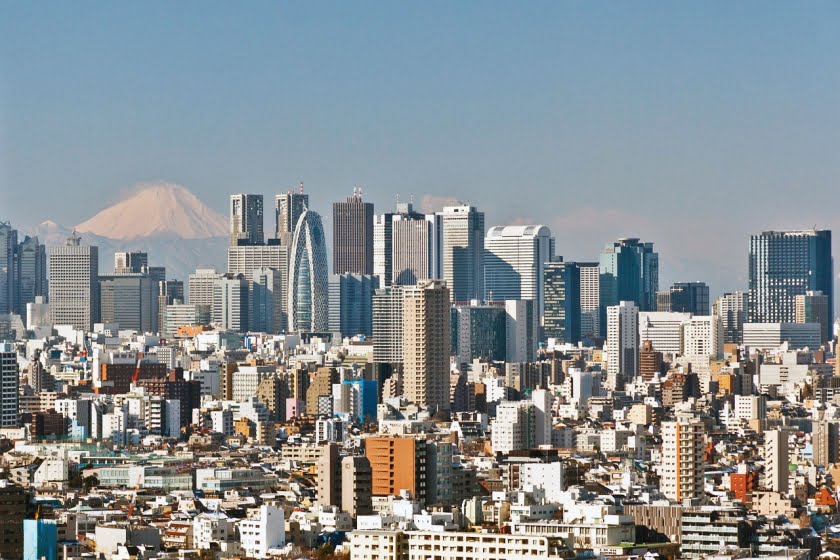

Tokyo — additional ideas (views, quiet spots, museums)
- Views & rooftops — Shibuya Sky (late afternoon → sunset), Tokyo City View (Roppongi), Bunkyo Civic Center (free), Ginza Six terrace (quiet).
- Rivers & Bays — Sumida cruise (Asakusa ⇄ Hamarikyu), gateways to Toyosu/Odaiba (night photos on the bay).
- “Shitamachi” neighborhoods — Yanaka Ginza & cemetery, Nezu-Jinja (azaleas in spring), Kiyosumi Gardens (peaceful garden).
- Targeted museums — Hokusai Museum (Sumida), Edo-Tokyo Open Air (Koganei), National Museum of Western Art (Ueno), Miraikan (Odaiba).
- Food & markets — Toyosu Market (tuna auction, very early), Tsukiji Outer Market (street-food), Depachika (basement gourmets) in Nihonbashi/Tokyu.
- Urban walks — Meguro River (cherry trees), Nakameguro → Daikanyama (concept stores), Kagurazaka (sloping streets, izakaya restaurant).
- Reservations/Tips — Ghibli Museum & teamLab: tickets to book in advance; for Shinjuku Gyoen, arrive early on weekends.
Around Mount Fuji
- Chureito Pagoda (Arakurayama Sengen Park) — better light at sunrise; hanami and autumn foliage are very photogenic.
- kawaguchiko — North path of the lake (reflections of Fuji in calm weather), easy bike rental; Oishi Park viewpoint.
- Oshino Hakkai — pools of clear water (midday more frequented); prefer morning.
- Iyashi-no-Sato (Saiko) — reconstructed hamlet with thatched roofs, craft workshops, view of Mount Fuji in clear weather.
- Hakone loop — Hakone Tozan train → cable car → ropeway → Lake Ashi boat (Heiwa-no-Torii torii gate); cost-effective 1–2 day zone pass.
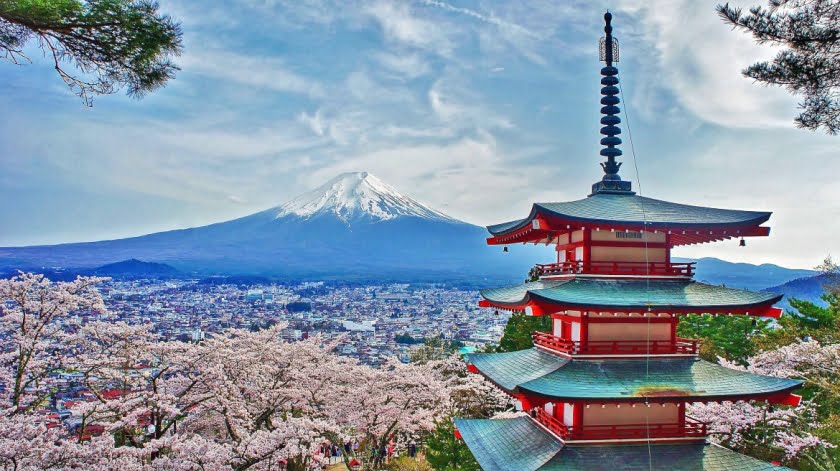
Subaru Line 5th Station — seasonal access (summer); partial hikes if you do not do the climb.
Logistics — practical bases: Kawaguchiko (2 nights minimum), Hakone-Yumoto; weekend = book ryokan/transport in advance.
Elsewhere in Kanto
- Nikko — Kanmangafuchi Abyss (Jizō statues + torrent), Rinno-ji Shōyō-en (calm garden), Ryūzu/Ke-gon Falls (autumn).
- Kamakura & Enoshima — Hasedera (panorama), Hokoku-ji (bamboo grove + tea room), Daibutsu trail → Kita-Kamakura (gentle walking), Sea Candle of Enoshima (bay view).
- Yokohama — Red Brick Warehouse & Minato Mirai promenade, Osanbashi Pier (night photos), Yamate district (Western-style houses).
- kawagoe — alleyways kurazukuri, Toki-no-Kane bell, gentle atmosphere in the late afternoon.
- Ibaraki — Hitachi Seaside Park (nemophila/kochias depending on the season), Fukuroda Falls (winter freezing possible).
- Chiba — Nokogiriyama (large carved Buddha, “saw-tooth” cliffs), Bōsō peninsula (wild coasts).
- Tochigi/Gunma — Ashikaga Flower Park (wisteria late April/early May), Kusatsu Onsen (high sulfur springs, demonstration) yumomi).
- Mount Tsukuba — cable car loop + short hike, views over the Kantō plain.
Ogasawara (a remote archipelago near Tokyo)
- Chichijima : Ogasawara National Park, Nakayama viewpoint.
- Minamijima : Ogichi cove, sublime waters (access regulated).

2) NORTH: HOKKAIDŌ & TŌHOKU
Northern Japan unfolds wilder landscapes: national parks, hot springs, and snowy winters. Hokkaido captivates with Shiretoko (coasts, forests, wildlife) and Daisetsuzan (volcanoes, hiking), not forgetting Sapporo and its snow festival.
More to the south, Tohoku alternates between lakes, gorges and Zen temples, with preserved forests in Shirakami-Sanchi and superb autumn colours. An ideal region if you like calm atmospheres, hot baths and panoramic walks.

Hokkaido — Nordic parks, onsen & landscapes
Parks & volcanoes
- Shiretoko (UNESCO) — 5 lakes, Cape Shiretoko, wildlife cruises (seals, eagles, bears).
- Daisetsuzan — Asahidake (cable car + crater trail), alpine flowers late spring.
- Toya–Usu — recent cones, volcanic viewpoints, eruption museum.

Onsen & Valleys
- Noboribetsu Onsen — Jigokudani (the “hell” valley), sulfur baths.
- Sounkyo — gorges, Ryusei & Ginga falls.
Coasts & Islands
- otaru — stone warehouses, a stroll along the canal.
- Rishiri & Rebun — coastal hikes, endemic flowers.
Tōhoku — lakes, gorges, onsen & historical sites
Lakes & Gorges
- Oirase Gorge — riverside path, waterfalls, easy & photogenic.
- Lake Towada — mini-cruise possible; spectacular autumn colours.
- Geibikei Gorge — traditional boat, very peaceful atmosphere.
Mountains & nature
- Shirakami-Sanchi (UNESCO) — primary beech forest, Juniko lakes, Aoike.
- Mount Iwaki & chain of mountains Ōu — panoramas, moderate climbs.
- Mount Osore (Osore-zan) — almost lunar volcanic landscapes.
- Towada–Hachimantai Park — volcanic plateaus, alpine marshes.

Onsen & villages
- Ginzan Onsen — wooden ryokans, iconic winter atmosphere.
- Nyūtō Onsen — milky baths (Tsurunoyu, Taenoyu), overnight stay recommended.
Historical & Cultural Sites
- Hiraizumi — temples Chūson-ji & Mōtsū-ji (gardens, ponds).
- Yamadera (Risshaku-ji) — 1,000 steps, superb late afternoon light.
- morioka — Hōon-ji temple (500 rakan).
- Sendai — ruins of the castle, mausoleum Zuihō-den.
- Matsushima — one of the “3 most beautiful views in Japan”, Zuigan-ji & Godaidō temples.
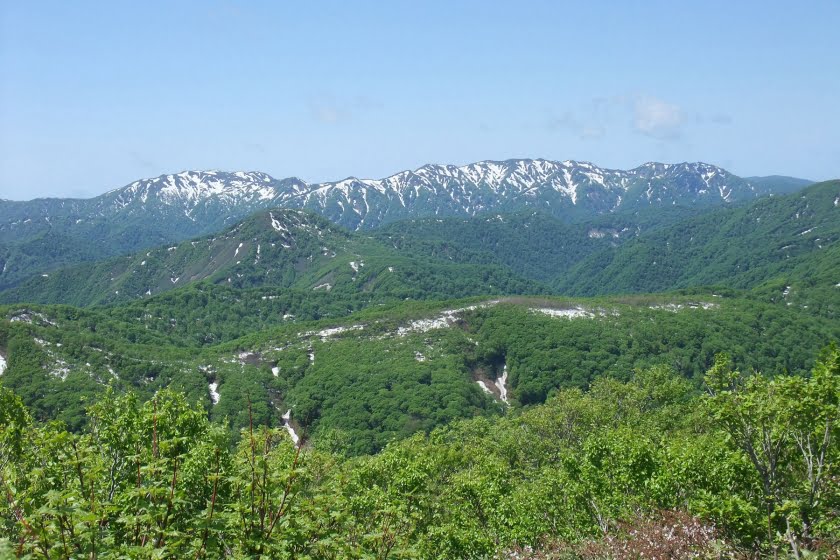
3) CENTRAL: JAPANESE ALPS & HISTORIC ROUTE (Chūbu)
Volcanic massifs, cool valleys and preserved villages: the mountainous heart of Japan ticks all the boxes for hiking + heritage. Kanazawa (Kenroku-en, historic districts) and Takayama often serve as entry points, before Shirakawa-gō and its thatched roofs.
Further south, the Kamikōchi Valley and Hotaka mountains They offer accessible trails and crystal-clear panoramas; along the ancient Nakasendō route (Narai-juku, Tsumago, Magome), you'll find the atmosphere of old coaching inns. A perfect area for a relaxing break between two major cities.


Japanese Alps (Chūbu) — Highlights & Route Tips
Mountains & Valleys
- Kamikōchi — valley, Kappa bridge, views of Hotaka.
- Tateyama–Kurobe — Alpine road, snow wall (spring).
- Norikura — Alpine route (summer), waterfalls; less frequented alternative.

Historic Villages & Towns
- Shirakawa-gō & Gokayama — gasshō houses, belvederes.
- Takayama — Sanmachi, morning markets.
- Kanazawa — Kenroku-en, Higashi Chaya, Ninja-dera.

Nakasendo Road
- Kiso Valley (Nakasendō) — Tsumago ⇄ Magome — sections on foot, period relays.
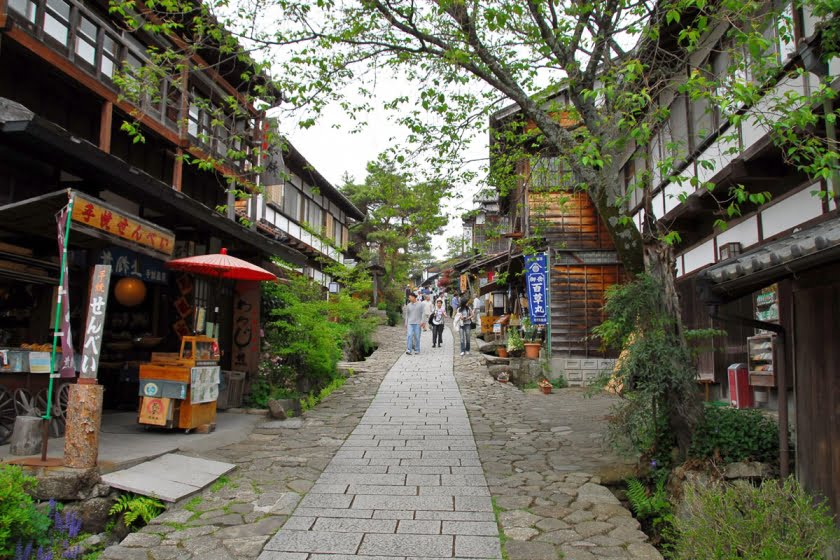
4) KANSAI: KYOTO, NARA & OSAKA
The "classic" of Japan is concentrated here Major temples, shrines, gardens and old quarters. It's no wonder this was our first destination in Japan. In Kyoto, we alternate between Kiyomizu-dera, Fushimi Inari-taisha and Arashiyama (bamboo grove, Tenryū-ji), between the streets of Gion and the banks of the Kamo.
Nara is appealing because of its free-roaming deer.But it also houses iconic temples like the imposing Tōdai-ji. Meanwhile, Osaka blends castles, a vibrant food scene, and modern sights (Umeda). For a spiritual and nature-filled escape, head to Kōyasan and explore the trails of Kumano Kodo up to the Nachi waterfalls.
Kyoto area (additional information)
- Shōsei-en — annex garden of Higashi Hongan-ji.
- Kurama → Kibune — gentle hike (ridge temples), return by Eizan train.
- Hidden Arashiyama — Ōtagi Nenbutsu-ji (statues), Gio-ji (moss); bamboo grove very early only.
- Tea district — Uji: Byōdō-in, tastings & quiet alleyways.
Nara area (additional information)
- Kasuga Taisha — Zen temple with stone lanterns
- Mount Wakakusa — view of the city
- Naramachi — traditional houses
- Yoshino — ridges & cherry trees.
- Asuka Historical National Park — tumuli, protohistoric remains.
Kōyasan & Kumano — pilgrimage logistics (Kii)
- Kōyasan — night in shukubō (shōjin ryōri meal), Okunoin cemetery at dusk.
- Kumano Kodo — Key sections: Takijiri → Hongū (2 days), Hongū → Nachi (2 days); luggage: storage/transfer possible.
- Onsen — Yunomine (historical bath), Kawayu (river bed, seasonal).
5) CHŪGOKU & SHIKOKU
Between iconic castles, renowned gardens, and contemporary art, the Inland Sea offers a diverse itinerary. It connects Himeji (white fortress) at Okayama (Kōraku-en, Kurashiki) before winning the museum islands of Naoshima and Teshima.
Hiroshima and its Peace Memorial Park leave a lasting impression, then Miyajima offers the iconic torii gate in the bay. On Shikoku, deep valleys (Iya), vine bridges and historic gardens (Ritsurin-kōen) add a very photogenic "natural" touch.
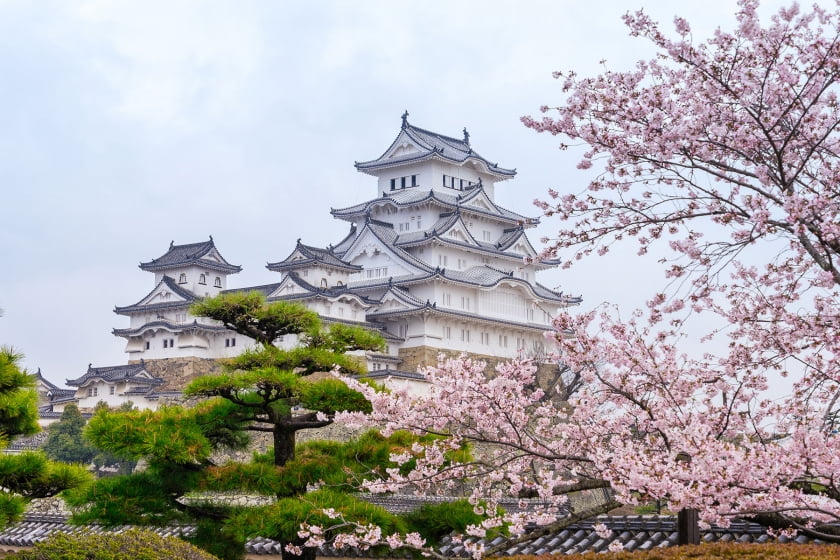
Chūgoku — Castles, Gardens & Seaside Shrines
Heritage
- Himeji — largest preserved castle.
- Okayama — Koraku-en garden.
Hiroshima & Miyajima
- Peace Park/Museum.
- Itsukushima — marine torii, Daishō-in, Mount Misen.

Shikoku — gardens, valleys & vine bridges
Gardens & Museums
- Ritsurin-kōen — historic gardens.
- Shikoku Mura — ecomuseum.
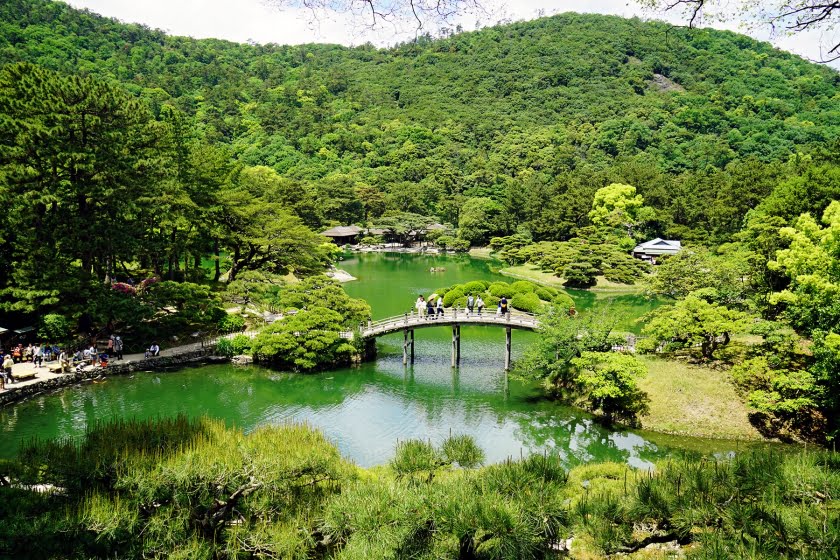
Valleys & Gorges
- Iya Valley — vineyard bridges, viewpoints.
- Oboke Gorge — boats, turquoise waters.
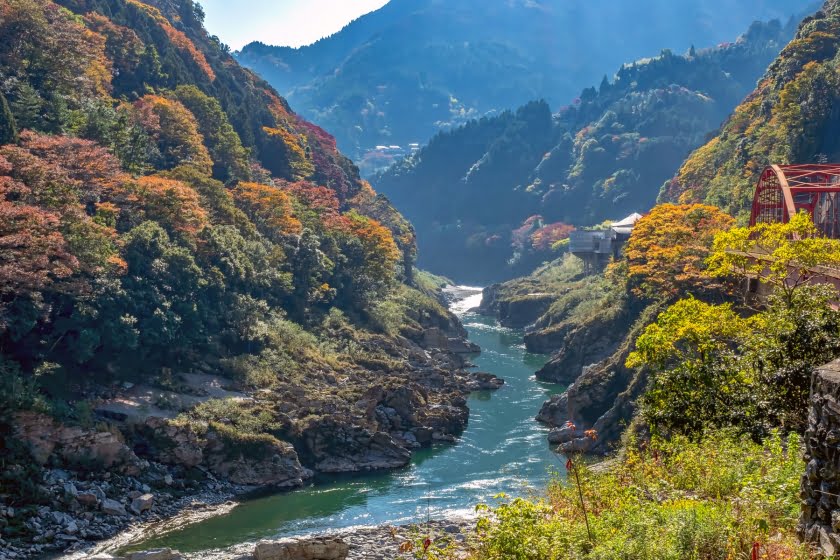
6) KYŪSHŪ
Kyushu, a southern island with a volcanic temperament, combines historic cities, renowned onsen (hot springs), and vast landscapes. Fukuoka often opens the route before Nagasaki (Museum and Peace Park, views of the bay).
In the center, the Mount Aso and its caldera overlook a territory of hiking trails and scenic routes, while Beppu is visited for its hot baths. Further south, Yakushima reveals a primeval forest carpeted with mosses and giant cedars, an almost cinematic setting.

Kyushu — volcanoes, gorges & onsen with character
Volcanoes & Landscapes
- Mount Aso — caldera, viewpoints.
- Takachiho — gorges & boats.
Onsen
- Beppu — baths, geothermal “hells”.
- Yufuin — alleyways, Lake Kinrin.
Cultural heritage
- Nagasaki — Peace Park.
- Kumamoto — castle, Jōsaien district.
7) OKINAWA ARCHIPELAGO: the Japanese tropics
A string of subtropical islands with clear waters, Okinawa contrasts sharply with the rest of the country: beaches, reefs, basalt cliffs, and mild winters. From Naha (Shuri Castle is under reconstruction), it's easy to reach the Kerama islands for snorkeling.
Further, Miyakojima unfurls ribbons of sand and bridges towards small islands; in the far south, Ishigaki and Iriomote They retain a wilder atmosphere (mangroves, sheltered bays). Perfect for ending a trip on a relaxing seaside note.

Okinawa in brief
Kerama
- Zamami — Furuzamami beach, observatories.
- Tokashiki — Aharen beach, snorkeling.
Miyakojima & connected islets
- Maehama — white sand, clear waters.
- Higashi Hennazaki — cornices & lighthouse.
- Ikema Island — creeks (Funakusu).
Yaeyama
- Kabira Bay — towers in the bottom of a glass.
- Iriomote — mangroves, Urauchi, Ida-no-hama beach.

Japan in brief
- Hokkaido Shiretoko and Daisetsuzan nature parks, Sapporo, Mount Yôtei
- Tohoku Region : Shirakami-Sanchi, Anmon Valley, Usori Lake (Osore-zan), Towada-Hachimantai National Park
- Tokyo : Shibuya, Asakusa (Sensô-ji), Meiji-jingû, Shinjuku Gyoen park
- Mount Fuji : Fuji-Hakone-Izu National Park, Hakone, Chureito Pagoda, Kawaguchiko (Tenjozan Park)
- Nikko : Tôshôgû sanctuary, Kegon Falls, Shinkyô bridge, Lake Chûzenji
- Kamakura : Kôtoku-in (Great Buddha), Sasuke-Inari, Zeniarai Benzaiten Ugafuku-jinja
- Japanese Alps : Nakasendô (Narai-juku & Tsumago-juku), Takayama, Kamikochi valley, Mount Hotaka
- Kyoto : Arashiyama, Kinkaku-ji, Ginkaku-ji, Kiyomizu-dera, Gion district, Fushimi Inari-taisha
- Nara : former capital, deer park, Tōdai-ji (Great Buddha)
- Wakayama : Kumano Kodô (Nachi-taisha), Mount Kôya (Oku-no-in cemetery)
- Osaka : Osaka Castle, Dotonbori, Umeda Sky Building, Shitennô-ji
- Hiroshima : Genbaku Dome, Peace Memorial Park, Shukkei-en, Mitaki-dera, Senko-ji
- Itsukushima / Miyajima : Itsukushima shrine, Daishô-in, Mount Misen
- Kyushu Island : Fukuoka (Shôfuku-ji), Nagasaki, Mount Aso (Naka-dake), Beppu (onsen), Yakushima
- Okinawa : natural parks (Ayamaru Misaki, Kerama), beaches & islands: Miyakojima, Ishigaki
Japan's points of interest on a map
Below you will find a general overview with ideas for major sights to see in Japan:
Japan is fascinating, but budget and time constraints often lead to focusing on a small area. In our case, we had a medium-length trip, 10 days, which is still quite short and therefore meant concentrating on a specific region.
The same obviously applies if your stay is short (1 week) but I also offer realistic itinerary ideas for an intermediate duration of two weeks with structured stages by zones up to a program for a full month.
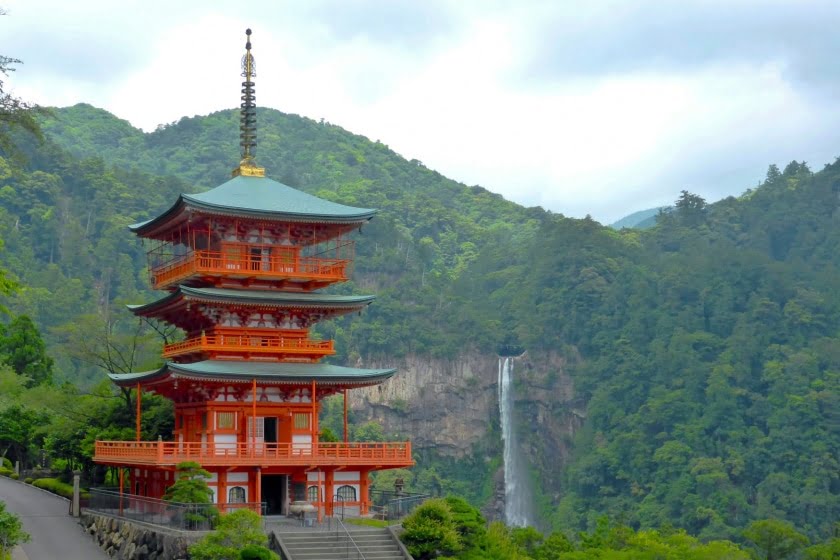
Our 10-day Itinerary
We had exactly nine full days there. We're always eager to explore when discovering a country for the first time because you never know when you'll have the chance to go back (one of my favorites, Indonesia, knows all about that...).
- Day 1 — Late arrival in Osaka
- D2–D3 — Kyoto : Nijo-jo, Imperial Palace, Kinkaku-ji, Gion district.
- D4 — Northern Kansai excursion : Amanohashidate & village of Iné, night towards Miyama.
- D5 — Miyama → Kyoto : Kayabuki-no-Sato, return to Kyoto, Arashiyama & Higashiyama.
- Day 6 — Kyoto (Eastern Classics) : Ginkaku-ji, Path of the Philosophers, Kiyomizu-dera.
- D7–D8 — Nara (via Fushimi Inari) : torii gate walkways, Tōdai-ji & major sites of the park.
- Days 9–10 — Osaka & departure : Osaka Castle, Dotonbori, Umeda Sky Building → return flight.
Please note: We move around a lot to get a good overview. This can be adjusted if you prefer longer stages.
Short break ideas
For a first trip with limited time, choose a classic: Tokyo or Kyoto. Tokyo can easily fill a whole week. If you prefer a more traditional stay, Kyoto and Nara are perfect bases. In either case, a side trip to Mount Fuji (Chureito/Kawaguchi) or Fushimi Inari can easily be added.
Tokyo (4–5 nights) + Fuji / Hakone (1–2 nights) OR Kyoto (6 nights) + Nara (1 night)

7-day proposal — Tokyo & Fuji/Hakone
- Tokyo base (4–5 nights) — Asakusa & Sensō-ji, alleys of Yanaka, Meiji-jingū & Yoyogi, Shinjuku Gyoen, Shibuya Crossing, Zojo-ji + Tokyo Tower, Hama-Rikyū garden (Edo), museums according to taste (Edo-Tokyo / TeamLab / Mori).
- Mount Fuji – Five Lakes Region (1–2 nights) — Chureito Pagoda (iconic view), walks to Lake Kawaguchi, onsen; ascent possible early July → mid-September.
- Hakone (1-night option) — onsen, Lake Ashi & torii, Owakudani (fumaroles), Open-Air Museum; easy access from/to Tokyo.
- Logistics — easy transport (JR/Regional Passes), luggage storage or ta-q-bin if needed.
7-day itinerary — Kyoto & Nara
The unmissable heritage, without rushing. Kyoto base, exit towards Nara.
Kyoto (5–6 nights)
- kinkaku-ji, Ginkaku-ji, Kiyomizu-dera Temple.
- Arashiyama — bamboo grove, Tenryū-ji, Katsura promenade.
- Gion & Ponto-chō — traditional alleyways.
Nara (1 day)
- Todai-ji (Great Buddha).
- Kasuga Taisha and the park.
- Return to Kyoto in the evening.
Logistics — dense limited express train connections; everything can easily be done in a day.
2-week itinerary
In two weeks, you can cover the essentials without rushing if you travel east to west. Option B focuses on the Japanese Alps and historic villages. The Shinkansen easily connects each stop; a regional/day pass may be sufficient depending on your itinerary.
Option A (classic) : Tokyo → Fuji/Hakone → Kanazawa → Takayama → Kyoto → Nara → Osaka → Hiroshima & Miyajima
Option B (mountains & villages) : Tokyo → Fuji → Matsumoto → Kamikōchi/Takayama → Kiso (Magome/Tsumago) → Kyoto → Nara → Osaka
14 days — Option A (classic East→West)
- Days 1–4 Tokyo — Asakusa/Sensō-ji, Meiji-jingū & Yoyogi, Shinjuku Gyoen, Shibuya, Zojo-ji + Tokyo Tower, Hama-Rikyū garden (according to taste: TeamLab/Mori).
- J5 Fuji/Hakone — Chureito Pagoda (Fuji view), Lake Kawaguchi or Hakone (Lake Ashi, Owakudani, onsen).
- J6 Kanazawa — Kenroku-en, castle, Higashi Chaya district, “Ninja-dera” (Myōryū-ji).
- D7–D8 Takayama — old town, ryokan; possible exits: Shirakawa-gō or Kamikōchi (depending on the season).
- Days 9–12 Kyoto — Kinkaku-ji, Ginkaku-ji, Kiyomizu-dera, Arashiyama, Gion & Ponto-chō.
- Day 13 Nara (day) — Tōdai-ji, Kasuga Taisha, deer; return and night in Osaka.
- D14 Hiroshima & Miyajima — Itsukushima Peace Park/Museum, "floating" torii gate.
Rhythm : 4N Tokyo · 1N Fuji/Hakone · 1N Kanazawa · 2N Takayama · 4N Kyoto · 1N Osaka (Hiroshima/Miyajima possible round trip or 1N on site).
14 days — Option B (mountains & villages)
- Days 1–3 Tokyo — great classics + half a day at museums/gardens.
- J4 Fuji (Kawaguchi) — Chureito, walks, onsen.
- J5 Matsumoto — castle; wasabi farm (optional).
- J6 Kamikōchi — valley, Kappa bridge, walks (or Daisetsu in Kamikōchi off-season → favor Takayama).
- D7–D8 Takayama — old town, ryokan; Shirakawa-gō excursion.
- J9 Kiso (Magome/Tsumago) — section of the old Nakasendō.
- Days 10–13 Kyoto — Kiyomizu-dera, Arashiyama, Kinkaku-ji; Fushimi Inari (morning/evening).
- Day 14 Nara/Osaka — Nara during the day, Dōtonbori in Osaka in the evening.
Rhythm 3 nights Tokyo · 1 night Fuji · 1 night Matsumoto · 1 night Kamikōchi/Takayama · 1 night Takayama · 1 night Kiso (or return to Takayama) · 4 nights Kyoto · 1 night Osaka. It's still quite intense; to slow things down, you could skip Osaka and spend two nights in Nara.
1-month itinerary
In one month, you can either explore the North (Tōhoku/Hokkaidō) et Return via Honshu, or head south (Shikoku/Kyushu) with an island stopover. Aim for a consistent itinerary: 3–5 major bases, with 2–4 night stays. Adjust according to the season (snow in the north, possible typhoons in late summer in the south).
Option A (North→South) : Tōhoku + Hokkaidō then Honshū (Tokyo → Alps → Kansai) — complete panorama with varied climates.
Option B (South & Islands) : Kansai → Shikoku → Chūgoku → Kyūshū (+ Okinawa extension) — culture, coastline and volcanoes.
1 month — Option A (Hokkaido + Honshu in stages)
- D1–D5 Tōhoku — Shirakami-Sanchi (Juniko/Aoike), Towada-Hachimantai (Oirase & Lake Towada), Hiraizumi or Yamadera, Matsushima Bay.
- J6–J12 Hokkaidō — Sapporo (Odori, beer), Daisetsuzan (Asahidake), Shikotsu-Tōya or Noboribetsu (onsen), Shiretoko (five lakes, wildlife) depending on the season.
- Days 13–16 Tokyo & surroundings — great classics + Kamakura or Nikko.
- Days 17–21 Japanese Alps — Kanazawa, Takayama, Kamikōchi, Kiso (Magome/Tsumago) or Matsumoto.
- J22–J27 Kansai — Kyoto (4–5N), Nara, Koya-san or Kumano Kodo excursion (2D if possible).
- D28–D30 Osaka/Himeji — Osaka (castle, Dōtonbori), round trip to Himeji or day trip to Hiroshima/Miyajima if you prefer.
Nighttime landmarks : 5N Tōhoku · 7N Hokkaidō · 4N Tokyo · 5N Alps · 6–7N Kansai · 2–3N Osaka/Himeji (or Hiroshima).
Logistics : Shinkansen to Hakodate/Sapporo (Hokkaido line), dense JR network; renting a car can help on Hokkaido depending on the itinerary.
1 month — Option B (Kansai → Shikoku → Chūgoku → Kyūshū + Okinawa extension)
- J1–J7 Kansai — Kyoto (4–5N), Nara, Osaka, possibly Koya-san (night in shukubō).
- D8–D12 Shikoku — Ritsurin-kōen (Takamatsu), Iya Valley (vine bridges), Tsurugi-san, Naruto Whirlpools; “nature & villages” rhythm.
- D13–D18 Chūgoku — Himeji, Okayama (Koraku-en), Naoshima/Teshima (art), Hiroshima & Miyajima.
- J19–J26 Kyūshū — Fukuoka (Ohori), Nagasaki (Glover Garden/Peace Park), Beppu (onsen), Aso (caldera), Kumamoto (castle).
- D27–D30 Okinawa extension (option) — main island (Cape Manzamo), Kerama National Park (Zamami/Tokashiki), or Miyako/Ishigaki (Kabira Bay, Iriomote).
Nighttime landmarks : 6–7N Kansai · 4–5N Shikoku · 6N Chūgoku (including art islands) · 7–8N Kyūshū · 3–4N Okinawa (option).
Logistics : Shinkansen to Kyushu; ferries/domestic flights to Okinawa and between some islands; car useful on Shikoku/Kyushu.
Coming to Japan
Japan has several international airports, including two in Tokyo — Haneda (HND), the closest to the center, and Narita (NRT)The other main entrances are Osaka–Kansai (KIX), Nagoya–Chubu (NGO), Sapporo–New Chitose (CTS) et Fukuoka (FUK).
The majority of arrivals from Europe are via Tokyo, with Narita located about sixty kilometers from the center.
Direct flights from Paris (CDG)
- Paris ⇄ Tokyo (HND/NRT) — Air France, Japan Airlines, ANA : ~11:45–12:30 non-stop.
- Paris ⇄ Osaka (KIX) — Air France (depending on the season): ~12h.
Price ranges (round trip, economy, indicative) low season ~640–900 € · mid-season ~€900–€1,200 Summer/Christmas ~1,200–1,500 €.
baggage Direct flights generally include one checked bag (23 kg). For some airlines, check the "Light" classes.
Flights with a stopover (often more economical)
Examples of companies with good value for money/duration:
- Finnair — via Helsinki: often ~ 560 € (Please note that checked baggage is an extra charge).
- Swiss — via Zurich: ~ 560 €, sometimes two pieces of luggage included.
- Alitalia — via Rome: fares ~500–600 €.
- Turkish Airlines — via Istanbul: often under € 500.
- Qatar Airways — via Doha: excellent value for money.
- Emirates — via Dubai.
- Etihad — via Abu Dhabi.
- Cathay Pacific — via Hong Kong.
Typical durations : ~13–16h door-to-door depending on stopover.
Duration tip : prioritize stopovers ~2–3h (beyond that, the journey easily exceeds 20 hours).

Which airport should I aim for depending on the itinerary?
- Tokyo & Kanto region : HND (the most practical) or NRT.
- Mount Fuji / Hakone : HND recommended.
- Japanese Alps (Kanazawa, Takayama, Matsumoto) : HND/NRT ou NGO (Nagoya).
- Kansai (Kyoto, Nara, Osaka, Wakayama) : KIX ideal.
- Chûgoku & Shikoku (Hiroshima, Okayama, Takamatsu) : KIX ou HIJ (Hiroshima).
- Hokkaido : CTS (New Chitose).
- Kyushu : FUCK (Fukuoka).
- Okinawa : OKA (Naha) + numerous domestic connections.
Useful reference points
- HND → center : Tokyo Monorail ~13–20 mins.
- NRT → center : Narita Express ~55–70 mins · Keisei Skyliner ~41 mins.
- KIX → Kyoto/Osaka : Limited Express Haruka ~75 mins (Kyoto).
- Short stopover recommended : 2–3h; beyond that, very long journeys.
Tip: if you follow up with a Shinkansen On the day of arrival, allow extra time (formalities, luggage, unforeseen events).
Search for a flight to Japan
Getting around in Japan
In Japan, the train is king: more than 23 000 km of tracks, high-speed lines Shinkansen Fast and punctual, and reliable local lines for fine-grained coverage. In the city, subways et bus take over without difficulty, so a typical stay is easily accomplished using public transport. You will also find taxis (expensive but marginally practical), of ferries to reach certain islands, and, if necessary, the car rental to explore rural areas.
In practice, we combine the train for long distances, metro/bus in the city, and sometimes a Highway Bus to optimize the budget or connect poorly served valleys/villages. The IC cards (Suica, PASMO, ICOCA) They make everything easier: a beep, and you're paid.
Overall, the "transport" category remains reasonable for the comfort offered — significantly more than in Southeast Asia, but excellent value for money.
City buses: paying, validating, finding your way around
- IC Card (Suica, PASMO, ICOCA): avoids the need for exact change and remote ticketing.
- Systems at lump sum or purchase depending on city/operator (take a ticket on board if required).
- Signs are often bilingual around tourist sites (e.g. Kyoto).
Long distance buses (Highway Buses)
A cheaper alternative to the train, the Highway Bus connecting Tokyo, Kyoto, Osaka, Mount Fuji and many other regions. Day or night journeys, comfort varies depending on the company (reclining seats, 2+1 rows, USB ports, sometimes onboard toilets).
- Highway Bus / Express Bus — Fast connections between major cities (Tokyo, Kyoto, Osaka, Nagoya, Sendai…). Often direct, frequent departures.
- Some local JR Bus routes complete the rail; the JR Pass is accepted on some sections (on a case-by-case basis). Check according to the route and the JR operator concerned.

Reservations / scheduling (EN):
For buses covering the entire country:
- Japan Bus Online — official multi-operator aggregator (e.g., Narita ⇄ Mt. Fuji, Kamikōchi…)
- JR West Bus (JR-West) — Kansai/Chūgoku network (Osaka, Kobe, Hiroshima, etc.)
- WILLER TRAVEL — booking platform for highway buses, comfortable night buses (EN)
For buses covering specific areas:
- Highway-buses.jp — Mt Fuji / Kawaguchiko lines (Keio Bus + Fujikyū)
- JR Bus Kanto — Tokyo lines ⇄ regions (JR)
- JR Bus West — Kansai/Chūgoku lines (JR)
Price ranges / journey times :
- Tokyo ⇄ Mount Fuji :~¥ 3 · 1:45–2:20
- Tokyo ⇄ Kyoto : ~4,500–8,000 yen · 7–9 a.m. (depending on day/night)
- Tokyo ⇄ Osaka : ~4,500–8,000 yen · 8–10am
- Tokyo ⇄ Nagoya : ~4,500–8,000 yen · 5–6am
- Tokyo ⇄ Sendai : ~4,500–8,000 yen · 5:30–6:30
- Useful example: Tokyo ⇄ Kawaguchiko (Fuji Five Lakes): ~4,500–8,000 yen · 1 hour 45 minutes
Tip: Night buses (Willer Express, JR Bus) allow you to save a hotel night and come in “Relax”, “Premium” or ultra-comfortable 2+1 row versions.
Taxis (types, fares & app)
Taxis (apps, types & price benchmarks)
In the city, you can easily do without one most of the time (the metro/bus is sufficient), but taxis remain convenient late at night, with luggage, or to save time. Booking is possible via apps in English.
- GO (formerly JapanTaxi) — most widely used app, English interface, in-app/card payment: download app.
- UberTaxi — mainly present in Tokyo/Osaka (often partner taxis).
- S.RIDE (Tokyo especially) — fast dispatch, electronic receipt.
- DiDi (depending on region) — a useful alternative outside of Tokyo.
See this site (in French) which provides additional details
Common types :
- "Classic" sedans (very common, often Toyota Crown/Comfort).
- Vans/Jumbo (for groups/luggage), more expensive.
Price benchmarks :
- Base + distance (indicative): departure around ~500–700 yen and ~300–400 yen/km depending on city/time.
- Tokyo Starting fee + increments per km/time (public rate, revised). Updated details: Tokyo Taxi Association.
- Airport to city center : expect to pay a lot for a taxi. In Tokyo, there are zone packages to/from Haneda: See official prices.
- Order of magnitude : an airport ⇄ centre can reach ~15,000–20,000 ¥ depending on city/time/traffic.
- Night surcharge : frequent (~20% depending on time slots).
- Quick estimate Calculate the most accurate fare (city → city): Taxi Auto Fare.
Useful information :
- Rear doors often operated by the driver: do not slam them.
- CB/QR payment is becoming increasingly common (cash is still widespread).
- Tipping is not allowed in Japan (it's forbidden!).
- Little English: have the address written in Japanese (or a GPS point).

Car, bike and rickshaw rental
Renting a car isn't essential for a first trip to Japan, but it's an excellent option for exploring rural or less-traveled areas (peninsulas, countryside, mountain regions). You definitely gain freedom and pace. Driving is calm, on the left, and speed limits are strictly observed.
Rules & Conduct
- Driving on the left; very high level of discipline.
- Typical speeds : 60 km/h in built-up areas (and often outside built-up areas), 100 km/h on motorways.
- Numerous, well-maintained motorways; frequent tolls.

Permits & procedures
- Le An international driving permit alone is not enough..
- It takes a official translation of the permit to the JAF (Japan Automobile Federation).
- Possible on-site (Kyoto, Tokyo, Osaka, etc.) or through agencies before departure. Reliable example:
Translation service (Experience Japan). - My dedicated article: Driving in Japan: What You Need to Know.
Car rental
- Book with a reliable national rental company:
Toyota Rent a Car (very widespread, long opening hours). - Alternatives via traditional comparison sites (e.g. Rentalcars).
- Ideal for the countryside of Kansai, Noto, Hokkaidō, rural Kyūshū, etc.

Bike rental
- Very common in medium-sized towns and rural areas.
- A lot of electric bikes, perfect for hills and countryside.
- Reference price: ~1000 yen per half-day for an electric bike (example: tea plantations in Wazuka).

Rickshaw (jinrikisha)
- They are mainly found in tourist areas (Kyoto, Asakusa, Kamakura).
- Primarily a "pleasure" experience; prices vary depending on duration.
- Best considered in good weather.
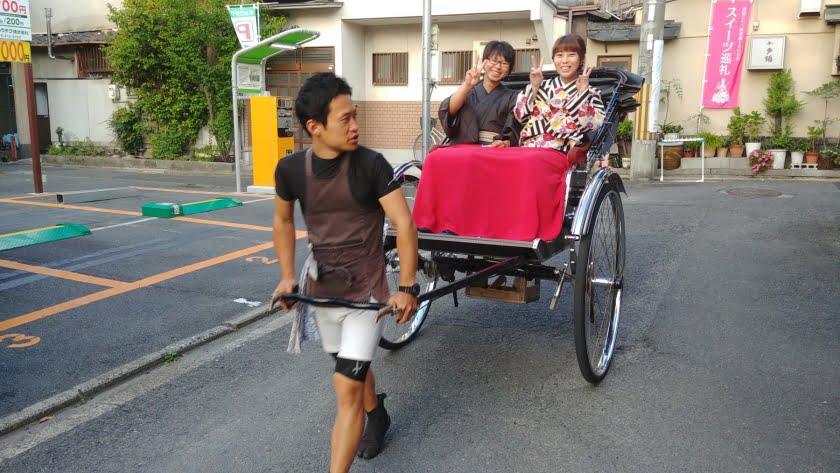
Rail transport
A dense, reliable, and punctual network. For long distances, the Shinkansen remains unbeatable; the "classic" lines finely serve the country.

Train categories (JR & private)
- Local News (kakueki-teisha / futsu-densha): stop at all stations.
- fast (kaisoku): skips certain stations, same price than Local.
- Express (kyūkō)
- Limited Express (tokkyū): major stops only, supplément depending on the distance.
- Shinkansen (Super Express): Japanese high-speed rail, dedicated lines and platforms.
TrickLimited Express shipments often require a fee in addition to the basic ticket (free with certain JR passes).
Durations (order of magnitude)
- Tokyo ⇄ Kyoto (Shinkansen Nozomi/Hikari): ~2h15–2h40.
- Tokyo ⇄ Osaka (Shinkansen): ~2h30 (fast direct).
- Kyoto ⇄ Hiroshima (Shinkansen): ~1h40–2h.
- Tokyo ⇄ Kanazawa (Shinkansen Hokuriku): ~2h30.

Classes, seats & onboard
- Classes Ordinary vs. Green (1ʳᵉ, more space, calmer).
- Places : “Reserved” (shitei-seki) / “Not reserved” (jiyū-seki) depending on the train.
- On board : clean toilets, luggage racks, sometimes swivel seats.
- Smokers only in smoking rooms on some Shinkansen; otherwise prohibited.
Tickets, passes & booking
JR Pass (national)
Suitable if you are connecting through several long flights (e.g., Tokyo ⇄ Kyoto ⇄ Hiroshima). Travel times: 7 / 14 / 21 daysThe official prices are displayed in ¥ (updated after the October 2023 increase); check the current price before buying.
- Official information & indicative prices: Japan.travel website (JNTO)
JR regional passes (examples)
- JR West (Kansai, San'in, Sanyō…): variations 1–7 days depending on areas.
- JR East (Tōhoku, Nagano/Niigata…), JR Central (Tōkaidō) JR Kyushu, JR Hokkaido, JR Shikoku : formulas according to region/validity.

JR Pass: How to get it today
Option A: Official online purchase You buy the JR Pass on the official JR website (see accordion box just after), you receive a QR code / withdrawal codeThen you collect the pass in person (passport + tourist visa) at a Travel Service Center or a JR ticket office (Midori no Madoguchi) once in Japan.
- Benefits : simple, no paper document to send, you choose the activation date at pickup.
- To know Collection is available at eligible JR ticket offices (major train stations/airports). Keep the QR code (printed or on your phone).
Option B: Exchange Order via an authorized reseller outside of Japan: you buy a voucher (paper/electronic) in advance, valid for 3 months from the date of issue. On site, it can be exchanged for the JR Pass at an eligible JR point (passport required).
- Key points : consider the time frame (≤ 90 days), check the reseller's conditions and exchange procedures.
Where to exchange/withdraw currency in Kansai (useful examples) Kyoto Station (Travel Service Center), Shin-Osaka, Osaka Station, Kansai Airport (KIX). Other stations in the region (Nara, Wakayama, etc.) also have JR ticket counters: present your ticket with the QR code (online purchase) or the voucher (exchange order) + passport.
Tips : pick up/exchange on arrival if possible (KIX convenient), leave some leeway before the first long-distance trip, and prepare: passport, desired activation date, name/address of accommodation in Japan.
Where to book (official)
At the train station : Ticket counters and automated machines (English available). To reserve a seat: date, route, class, train number or time speed up the operation.
Online reservations are possible for the following lines:
Taking the subway in Japan
Japan has an extensive subway network in its major cities, making it convenient for exploring neighborhoods and easily reaching key attractions. You'll find subways at Tokyo, Osaka, Kyoto, Yokohama, Nagoya, Sapporo and several other urban areas.
The most comprehensive network remains, of course, that of Tokyo, one of the densest and most efficient in the world. Osaka and Kyoto also have convenient lines, although more limited than Tokyo's.
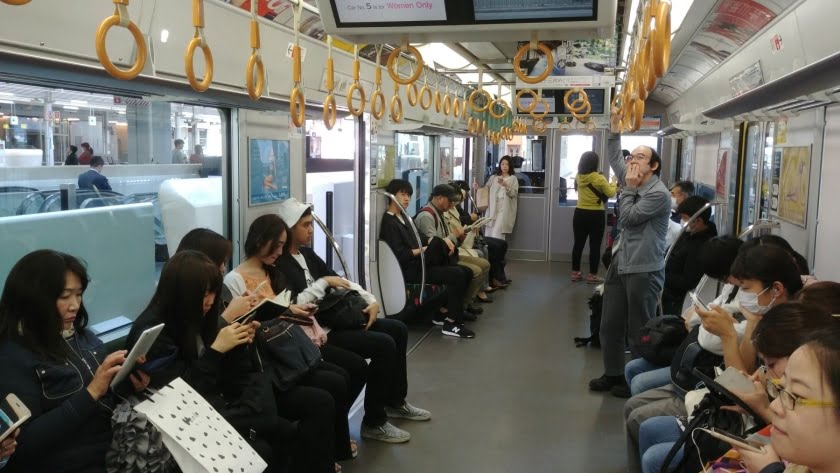
Good news, the signage is very clear: bilingual maps, announcements in English, and station numbers, which greatly simplifies travel for visitors. For even more comfort, consider using a Suica or Pasmo prepaid cardvalid on the metro, urban trains, buses and even as a means of payment in shops.
How it works and how to buy tickets
The system is similar to other subways around the world:
- If you don't have a prepaid card, use the automatic terminals to buy a “one shot” ticket.
- Validate the ticket at the entrance and keep it for the exit.
- If there is an error in the distance, use the markers. “Fare Adjustment” located before the exit gates to pay the difference.
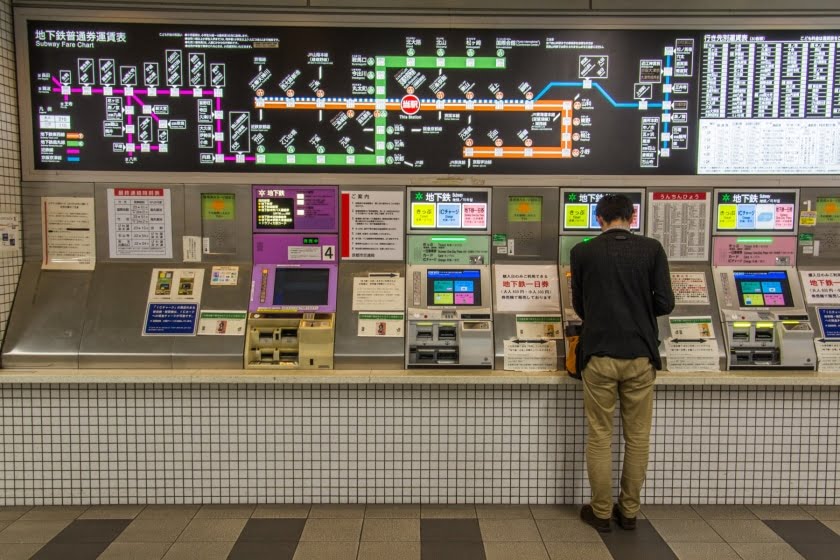
Practical advice
- Let the passengers out before mounting (sacred rule here).
- On the docks, wait on the sides doors, not in front of them.
- Expect high crowds during peak hours, especially in Tokyo.
Useful apps
To make your journeys easier, several apps provide routes, travel times, connections and fares:
- Tokyo — Tokyo Metro for Tourists (Android)
- All-in-one planner (JR, subways, buses, ferries) — NAVITIME for Japan Travel (Android)
- Ultra-precise train/metro routes — Japan Transit Planner – Jorudan (iOS) · Japan Transit Planner – Jorudan (Android)
- Maps & connections “at the foot of the platform” — Google Maps works well for that.
- Kyoto — KYOTO Transit Planner (Jorudan) – iOS
Connections to airports
In Tokyo, both main airports have fast connections via trains/subways:
- Narita Express (N'EX) → Tokyo, Shinjuku, Shibuya (≈ 50–70 mins)
- Keisei Skyliner → Ueno / Nippori (≈ 40–45 mins)
- Tokyo Monorail → Haneda ⇄ Hamamatsucho (≈ 15 min)
Depending on where you are staying, a metro + urban train solution can sometimes be faster and cheaper.
Shipping
Japan remains a vast archipelago — nearly 7,000 islands — and even though travel between the four main islands (Honshu, Kyushu, Shikoku, Hokkaido) is easy thanks to bridges and tunnels, ferries remain essential as soon as you leave urban areas. They serve both regional connections and isolated islands and some of them are only accessible by boat.
Long-distance ferries are veritable mini-ocean liners: lounges, restaurants, cabins on different levels and even public baths in the style of onsen on certain lines. You can board on foot, by bicycle or with a vehicle if you are on a road trip.
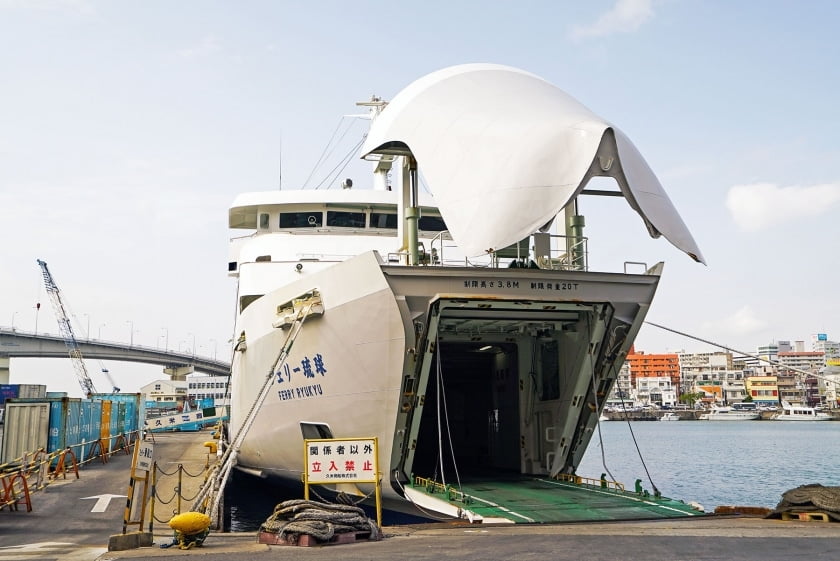
For overnight or long-distance crossings, there are several categories of cabins:
- 2nd class “without a bed” — common area with tatami/mattresses on the floor.
- 2nd class “with bed” — dormitories with 4–12 beds, approx. +20 to +40%.
- 1st class — 2–4 berth cabins, superior comfort.
- Special class — premium cabins, ideal for couples.
Reservations can be made either directly on the companies' websites (when an English version exists) or via aggregators. For a bicycle, expect to pay... fixed/hourly cost (often ~100 ¥/h).
To know : there are many companies in Japan; below are the main ones operating on major inter-regional routes.
- Sunflower Ferry — Osaka ⇄ Shibushi (Kagoshima), Osaka ⇄ Beppu, Kobe ⇄ Ōita.
- Meimon Taiyo Ferry — Osaka ⇄ Kitakyūshū (Shinmoji).
- Hankyū Ferry — Kobe / Izumiotsu ⇄ Shinmoji.
- Shin Nihonkai Ferry — Northern Honshū ⇄ Hokkaidō.
- Taiheiyo Ferry — Nagoya ⇄ Sendai ⇄ Tomakomai.
Multi-company booking :
- DirectFerries — Okinawa, Sakishima Islands, Izu Islands, regional ferries and some international connections.
Typical connections
- Osaka ⇄ Kitakyushu (Shinmoji) — night ferry · approx. 12 room · cabins from ~6,500–7,000 ¥.
- Osaka ⇄ Shibushi (Kagoshima) — long crossing ~ 15 h · practical for reaching the south of Kyushu.
- Kobe ⇄ Ōita — ~ 12 h · alternative to reach the onsen of Beppu.
- Nagoya ⇄ Sendai ⇄ Tomakomai (Hokkaido) — ~20–40 h according to segments (Taiheiyō Ferry).
- Aomori ⇄ Hakodate — short inter-island connection: ~3:30 (Hokkaidō ⇄ Honshū).
Advantages: coastal views, possibility ofembark a vehicleand overnight stay included on long crossings.
Japan also has some international connections, especially towards South Korea. The most common route connects Osaka to Busan (however, it's not cheap), see next accordion.
International ferries (Japan ⇄ Korea / China)
Japan has several international ferry connections, primarily to South Korea and China. These ferries are mostly used by long-distance travelers or those wishing to avoid flying, but can be an attractive alternative depending on your itinerary.
- Osaka ⇄ Busan - via PanStar CruiseCrossing of approximately 17–19 hoursDepartures several times a week. Cabins of different levels (from dormitory to private). Possibility of bringing a vehicle on board.
- Shimonoseki ⇄ Busan - via Kampu FerryCrossing ~ 12 hDaily service. Japanese-style cabins or classic berths.
- Osaka / Kobe ⇄ Shanghai - via Shanghai FerryLong crossing (~45–50 h). Varied cabins, international service, restaurant on board.
Note: Connections may vary depending on the season, weather, and company operations. Online booking is recommended for private cabins and longer crossings.
Air transport
Japan has several major international gateways. The four most frequently used are:
- Tokyo – Haneda International Airport (HND)
- Tokyo – Narita International Airport (NRT)
- Osaka – Kansai International Airport (KIX)
- Nagoya – Chubu Centrair International Airport (NGO)
Osaka also hasItami Airport (ITM), dedicated to domestic flights. Fukuoka (FUK) is a major hub in Kyushu, with many domestic flights and international connections, mostly regional (Asia).
Besides these airports, there are several dozen domestic platforms. The most frequently used, in addition, include:
- Sapporo — Shin-Chitose (CTS), Hokkaido's main airport
- Naha — Okinawa-Naha (OKA)
- Kagoshima (KOJ) — southern Kyushu
- Kumamoto (KMJ) — Kyushu center
- Sendai (SDJ) — Tōhoku region
- Miyazaki (KMI) — is from Kyushu
- Matsuyama (MYJ) — Shikoku Island
- Hiroshima (HIJ) — west of Honshu
- Kobe (UKB) — Kansai region
- Ishigaki — Painushima-Ishigaki (ISG), Yaeyama archipelago (Okinawa)

Useful airlines & low-cost carriers
Should we take an internal flight? As long as you stay on the four main islands, the train is often the most convenient option (and competitive with a JR Pass). For Okinawa, the islands ofIshigakiFor Miyako or certain very long journeys, the plane is the fastest, with low-cost often aggressive on pricing.
- Full service : ANA · JAL
- Low-cost / regional :
- Peach Aviation (KIX/NRT/OKA bases)
- Jetstar Japan (NRT/KIX/NGO)
- Skymark Airlines (HND/Kobe…)
- Air Do (Hokkaido ↔ Honshu)
- Solaseed Air (Kyūshū/Okinawa)
- StarFlyer (Kita-Kyūshū/Fukuoka ↔ HND)
- Fuji Dream Airlines (regional network)
- IBEX Airlines (Sendai-centric)
Please note: AirAsia Japan has ceased its operations in 2020 (not to be confused with AirAsia in Southeast Asia). On Japanese low-cost carriers, expect strict baggage policies and additional fees (seat selection, cabin baggage/hold…).

Examples of durations & price ranges
- Tokyo (HND/NRT) ⇄ Sapporo (CTS) :~1 pm - 40 pm · ~¥6,000–18,000 (LCC) · ~¥6,000–18,000 (ANA/JAL).
- Tokyo (HND) ⇄ Fukuoka (FUK) :~6:50 PM–8:00 PM · ~¥6,000–18,000 (LCC) · ~¥6,000–18,000 (full service).
- Osaka (KIX/ITM) ⇄ Sapporo (CTS) :~2h · ~¥6,000–18,000 (LCC) · ~¥6,000–18,000.
- Tokyo (HND/NRT) ⇄ Okinawa – Naha (OKA) :~2 pm - 20 pm · ~¥6,000–18,000 (LCC) · ~¥6,000–18,000.
- Osaka (KIX) ⇄ Okinawa – Naha (OKA) :~2h · ~¥6,000–18,000 (LCC) · ~¥6,000–18,000.
- Promo marker : AR Tokyo ⇄ Sapporo from ~¥6,000–18,000 (Peach / Jetstar Japan, cabin baggage).
With good low-cost deals, prices can fall low during off-peak periods, while in high season (Golden Week, Obon, New Year), prices rise sharply.
Tips : compare the cost/time of access to airports (Haneda is often faster than Narita) · beware of baggage fees with low-cost airlines.
Japan attracts huge crowds (especially during cherry blossom and momiji seasons, Golden Week, and Obon), now exceeding 30 million visitors annually. It's no secret that Japan isn't known for its budget options (nor for the size of its hotel rooms): plan accordingly. way Therefore, to enjoy it peacefully.
However, the range of options remains vast, from capsule hotels to high-end ryokan.
Types of accommodation & price ranges
- Capsule hotels : individual sleeping accommodation in a capsule, shared sanitary facilities. ¥2,000–5,000 (≈ 12–30 €).
- Hostel / guesthouse : dormitories and a few private rooms. ¥2,000–5,000 (≈ 15–35 €).
- Business hotel (2–3★) : compact room (11–14 m²), “unit” bathroom. ¥2,000–5,000 (≈ 40–70 €).
- Standard hotel (3–4★) : more comfortable rooms, good location. ¥2,000–5,000 (≈ 70–115 €).
- Good hotel (key cities) Tokyo/Kyoto/Osaka, central districts. ¥2,000–5,000 (≈ 85–140 €).
- Ryokan (tatami, futon, onsen, kaiseki meals possible): often half-board. ¥18,000–35,000+ (≈ 100–200 €+).
- High-end / boutique : design, advanced service, views. ¥30,000+ (≈ €170+).
Upon arriving in Osaka, we stayed in a mid-range room, quite spacious by Japanese standards (13 m²), a short walk from the train station towards the Umeda district. We also appreciated the small terrace with a view of Osaka. Shine Nakazaki


In Kyoto, we moved to a mid-range hotel, slightly better than the previous one. The advantage was its proximity to the subway and being less than 2 km from tourist attractions like Nijo Castle. The welcome was pleasant; they had even looked after our luggage while we waited for check-in. Hotel Gran Ms Kyoto (Out of season, I see prices starting from €40, which is a great deal!)
Below, I will give you a little more detail regarding the two extremes in terms of price, which are the best hotels tested during this stay.
To know
- Compact rooms That's the norm, especially in cities. Prefabricated bathrooms are common.
- Non-smoker : specify “Non-Smoking RoomSome hotels still have smoking floors; ask for them. guaranteed non-smoking.
- Expensive seasons Late March–April (sakura), mid-August (Obon), November (momiji), New Year. Book now early and keep an eye out for offers with free cancellation.
- Ryokan & onsen : respect local customs (yukata, showers before bathing, tattoos sometimes restricted → check the establishment's policy).
- Tourist tax : in several cities, added to the overnight stay (modest amount).
- Amenities : self-service laundromats, 24/7 convenience stores, luggage storage at the train station.
Tokyo: Where to stay for a first visit?
- Shinjuku : very well connected (JR/Yamanote), nightlife, numerous hotels.
- Shibuya : young, dynamic, practical for going out and shopping.
- Ginza / Tokyo Station : more upscale, Shinkansen access/business areas.
- Ueno / Asakusa Museums, parks, a more traditional atmosphere, and a variety of budgets.
Kyoto: Practical areas to visit
- Kyoto Station : easy base for exploring by bus/train.
- Gion / Higashiyama : “old Kyoto” atmosphere, close to temples (often more expensive).
- Karasuma / Kawaramachi : central location for restaurants and shops.
- Arashiyama : bamboo grove, quieter (slightly longer journeys to the centre).
Osaka: Recommended neighborhoods
- Namba / Dotonbori : city center, food scene.
- Umeda : major JR/metro hubs, quick access to Kyoto/Kobe.
- Tennoji : good value for money, practical lines.
Guesthouse Nara Komachi
Note: 9,0 / 10
Budget: from €25
The cheapest room of our entire trip and definitely a great deal in Nara; located in a quiet area not far from Nara JR Station, it was only a short kilometer from the park and major temples like Tōdai-ji. The room was admittedly small but private and had an en-suite bathroom. Depending on the season, the price can increase (we paid €49), but in this price range, it's one of the best value-for-money options in Nara.
Kigusuriya Ryokan
Note: 9,0 / 10
Budget: from €160
The principle of a ryokan is to be pampered by your host, and this includes meals (dinner and breakfast). In our case, we tried the very best (the Cottage room, listed at €500!), the only room available when I booked, but its location was perfect for us, a little secluded in the mountains not too far from the village of Miyama where we were going the next day. Without my significant discount, I never would have been able to afford it, but the "basic" room is more affordable.
To book a hotel in Japan, please use the search tool:
Local currency The official currency is the Japanese yen (JPY, ¥). The following coins and banknotes are currently in circulation in Japan:
- Parts : 1, 5, 10, 50, 100, 500 yen
- Tickets : 1,000, 5,000, 10,000 yen
Indicative rate: (in 2025 we are generally in this range)
- 1 € ≈ 180 ¥
- 1,000 yen ≈ 5–6 euros
Conversion marker For a quick calculation while traveling, multiply the first figure by 5; to get closer to the actual figure, add 10%.
Quick example – 10,000 ¥ → ~€50 (+10% = €55, the actual rate being €55–€60 depending on the current rate)
Daily : card/contactless payments are becoming more widespread, but keep some cash on hand, essential in: small restaurants, temples, local ATMs, intercity buses, traditional accommodations (ryokan).
Price benchmarks
Accommodation
- Entry-level bedroom: ¥2,000–5,000 (≈ €22–40)
- Standard hotel: ¥2,000–5,000 (≈ €50–85)
- Good hotel (Tokyo / Kyoto / Osaka): ¥2,000–5,000 (≈ €85–140)
- Traditional ryokan: ¥2,000–5,000 (≈ €100–200; often dinner and breakfast included)
Catering
- Small local restaurant (ramen, curry, soba): ¥700–1200 (≈ €4–7)
- Dish in a Sukiya/Yoshinoya type chain: ¥500–900 (≈ €3–5)
- Coffee / drink: ¥300–600 (≈ €2–4)
- Classic restaurant: ¥2,000–5,000 (≈ €7–18)
- Sushi counter / izakaya: ¥2,000–5,000 (≈ €18–35)
- Higher-end output: ¥30,000+ (≈ €45+)
Transport
- Subway (Tokyo): ¥170–320 (≈ €1–2)
- City bus (Kyoto): ¥230–300 (≈ €1,5–2)
- Taxi (pick-up): ¥500–600 (≈ €3–4) + meter
- Local JR train: ¥200–600 (≈ €1,5–4)
- Shinkansen Tokyo → Kyoto: ¥13 (≈ €75–85) in Nozomi
Visits
- Temples / shrines: ¥300–1200 (≈ €2–6)
- National Museums: ¥500–1200 (≈ €3–9)
- Observatories (Tokyo Skytree / Shibuya Sky): ¥2,000–5,000 (≈ €12–20)
- Osaka Castle: ¥ 600 (≈ €4)
- Kiyomizu-dera (Kyoto): ¥ 400 (≈ €2,5)
For data updated by city (rent, restaurants, groceries…), check out Numbeo, e.g. for Tokyo, Osaka or, Kyoto.
Small budget
Average budget
Comfortable
Japan is one of the safest countries in the world, but it remains vulnerable to natural disasters (earthquakes, typhoons). Good travel insurance and a few basic precautions are therefore advisable, even though hygiene and safety conditions are excellent.
Do I need travel insurance?
Even though Japan is a very safe country, there is no such thing as zero risk, particularly due to natural disasters (earthquakes, typhoons, volcanic eruptions). Medical expenses can be high without insurance, especially in the event of hospitalization or an accident.
The insurance included with bank cards generally covers up to 90 days and with ceilings that are too low (often around €10 000Dedicated travel insurance usually covers €150 to €000 and includes civil liability.
I recommend you Heymondo Travel Insurance (5% discount via my link).
Transparency: if you subscribe via this link, I will receive a small commission — at no extra cost to you.
What vaccines and health precautions are needed?
Japan does not ask no mandatory vaccinations For European travelers. It is simply advisable to be up-to-date with:
- DTP (adults)
- MMR (children)
Recommended vaccines depending on the trip:
- Hepatitis A
- Hepatitis B
- Japanese encephalitis
The Japanese encephalitis vaccine may be recommended for extended stays in rural areas or in the wilderness. As it is a mosquito-borne disease, mosquito repellent is still advisable.
Hygiene in Japan
The country is extremely clean, with hygiene standards close to (or even exceeding) those of Europe. The risk of traveler's diarrhea is low.
The only significant warning: if you taste the fugu (fish is very toxic if not prepared properly), choose a reputable restaurant where the chefs are certified.
General reminder For raw meats/fish: no problem in serious restaurants, but caution is advised outside certified establishments.
Safety in Japan
Japan is renowned for its exceptional safetyThefts, assaults or scams are extremely rare.
It is often said that if you forget a wallet, it will be waiting for you in the same place or will be handed over to the nearest police station — and this is true in the majority of cases.
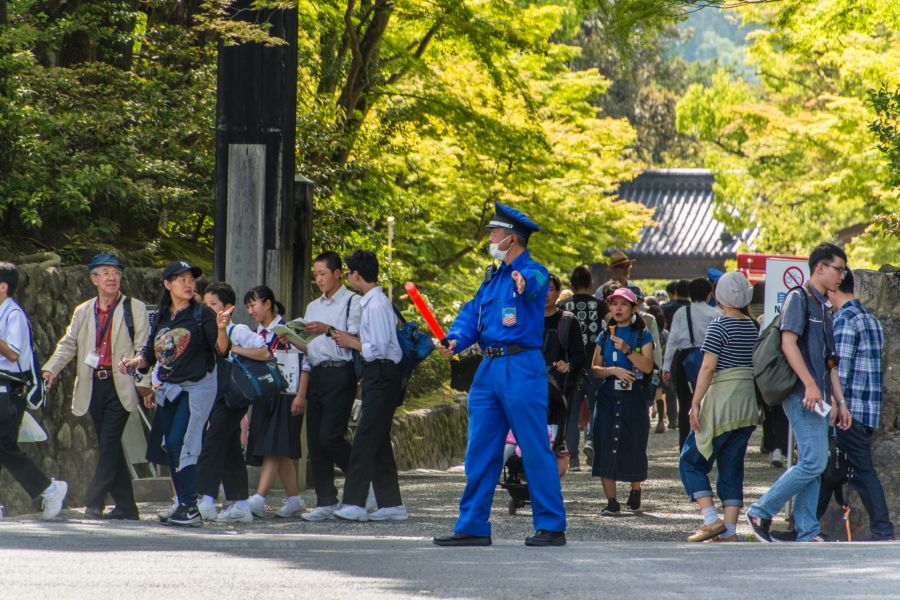
Natural hazards: typhoons, rain and earthquakes
- Typhoons: From June to October (peak August–September). Strong winds, heavy rain.
- Earthquakes: frequent, but the country is very well prepared.
- Volcanoes: Some craters or trails may be temporarily closed.
- Wildlife: Bears in some rural areas, monkeys not to be fed.
- Fukushima: areas still off-limits around the power plant.
Nothing to worry about for the average traveler, but maintain basic vigilance and follow local instructions (weather alerts, earthquake instructions).
Practical information, hospitals and useful numbers
Emergency numbers
- Police : 110
- Firefighter / Ambulance: 119
- Police with possible response in French: +81 3 35 03 84 84
Hospitals in Tokyo
- Red Cross Hospital (Nisseki Byoin)
+81 3 34 00 13 11 - Keio University Hospital
+81 3 33 53 12 08 - Tokyo Clinic (English/French speaking doctors)
+ 81 3 34 36 30 28 / + 81 3 34 36 30 25
Embassy of France in Japan
4 Chome-11-44 Minamiazabu, Minato City, Tokyo 106-8514
Tel: + 81 3 57 98 60 00
Embassy website: https://jp.ambafrance.org/




